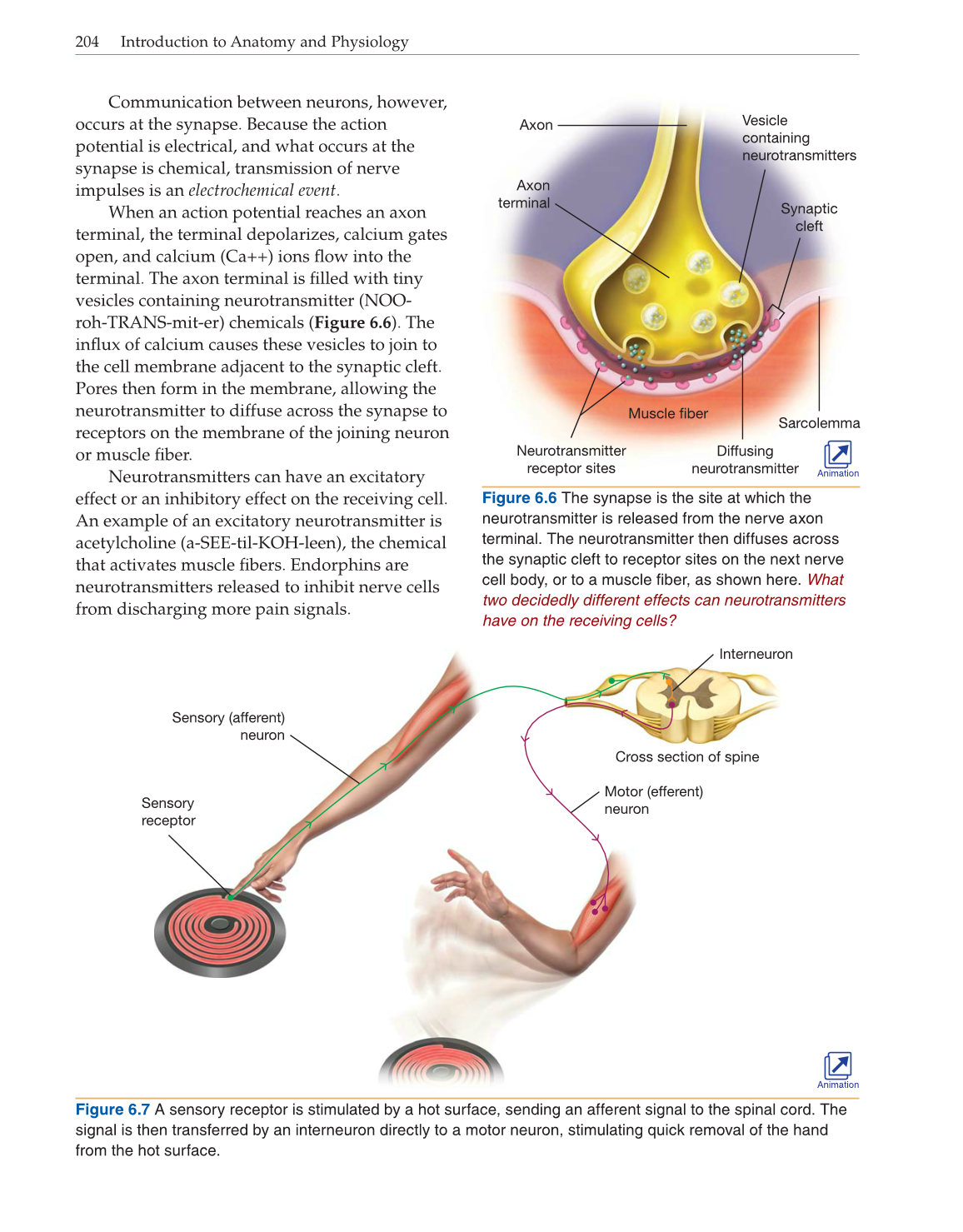204 Introduction to Anatomy and Physiology
Communication between neurons, however,
occurs at the synapse. Because the action
potential is electrical, and what occurs at the
synapse is chemical, transmission of nerve
impulses is an electrochemical event.
When an action potential reaches an axon
terminal, the terminal depolarizes, calcium gates
open, and calcium (Ca++) ions fl ow into the
terminal. The axon terminal is fi lled with tiny
vesicles containing neurotransmitter (NOO-
roh-TRANS-mit-er) chemicals (Figure 6.6). The
infl ux of calcium causes these vesicles to join to
the cell membrane adjacent to the synaptic cleft.
Pores then form in the membrane, allowing the
neurotransmitter to diffuse across the synapse to
receptors on the membrane of the joining neuron
or muscle fi ber.
Neurotransmitters can have an excitatory
effect or an inhibitory effect on the receiving cell.
An example of an excitatory neurotransmitter is
acetylcholine (a-SEE-til-KOH-leen), the chemical
that activates muscle fi bers. Endorphins are
neurotransmitters released to inhibit nerve cells
from discharging more pain signals.
Axon
Axon
terminal
Vesicle
containing
neurotransmitters
Synaptic
cleft
Sarcolemma
Muscle fiber
Neurotransmitter
receptor sites
Diffusing
neurotransmitter
Figure 6.6 The synapse is the site at which the
neurotransmitter is released from the nerve axon
terminal. The neurotransmitter then diffuses across
the synaptic cleft to receptor sites on the next nerve
cell body, or to a muscle fiber, as shown here. What
two decidedly different effects can neurotransmitters
have on the receiving cells?
Sensory
receptor
Interneuron
Sensory (afferent)
neuron
Motor (efferent)
neuron
Cross section of spine
Figure 6.7 A sensory receptor is stimulated by a hot surface, sending an afferent signal to the spinal cord. The
signal is then transferred by an interneuron directly to a motor neuron, stimulating quick removal of the hand
from the hot surface.
Animation
Animation
